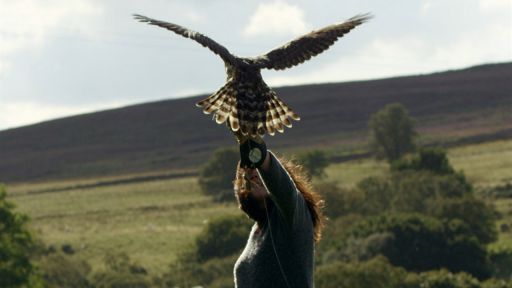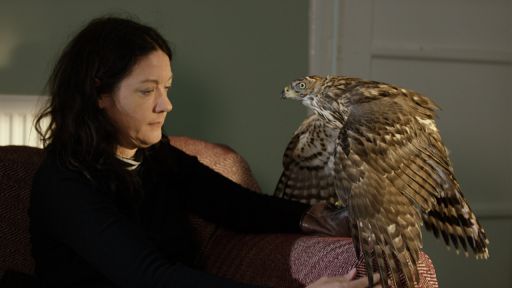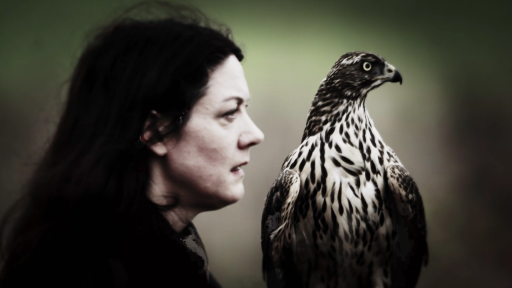After the unexpected death of her photojournalist father, Helen Macdonald overcame her grief by training an adult goshawk, one of nature’s most notoriously wild and free-spirited birds of prey. As she explains in the film, “I ran towards things of death and difficulty: spooky, pale-eyed feathered ghosts that lived and killed in woodland thickets. I ran towards goshawks.” She had trained birds before, but never this raptor which she named Mabel. Macdonald found healing in that cathartic experience which became the basis for her 2014 international best-selling memoir H Is for Hawk.
Now, 10 years after she trained Mabel (who died of untreatable infection just before the author finished writing her book), Macdonald is ready to take on the challenge again, prompted by watching how a pair of wild goshawks reared their chicks in an English forest. This Nature film accompanies her on visits to the pair’s nest to observe the latest developments and follows Macdonald’s emotional and intimate journey as she adopts a young goshawk and attempts to raise it as her own: feeding, nurturing, and training her new charge in the hopes the months of preparation will culminate in a successful first free flight.
In this first-person account, Macdonald makes a point of distinguishing between her solitary withdrawal from the world while working with Mabel a decade ago and her desire now to share her new training experience with others. Not having a yard suitable for raising a goshawk, Macdonald turns to her friend and fellow falconer, Kirsty Allen, who lives in the Pennine Hills in the north of England. Allen is the goshawk’s new owner, but Macdonald would be there to train the female bird she calls Lupin.
The film charts Macdonald’s progress: from time spent watching goshawks during breeding season on monitors at the aviary where Lupin was born; taking the first steps to tame the hawk by gaining her trust; patiently waiting for the bird to choose to come to her hand to retrieve food; getting Lupin used to Allen and her other goshawk; and training Lupin to fly to Macdonald’s gloved hand across a field while still secured by a long line of braided cotton, called a creance.
In addition to the training sequences, the program features Macdonald reflecting on her childhood obsession with birds illustrated with old home video and photographs. She tells of taking a falconry course at age 13 and working at a bird of prey center where she was given her first kestrel that slept in her bedroom bookcase at night. She credits her parents for being incredibly understanding.
On visits to view the wild goshawk nest in the forest, Macdonald describes these birds as highly secretive, with the spring breeding season being the only time you can observe them. After over a century of extinction, they are making a comeback in Britain due to falconers importing European goshawks in the ‘60s and ‘70s. They typically would keep one for falconry, while setting the other free. She explains this reintroduction went well because the goshawk is such a self-reliant and predatory bird that is tuned to hunt and kill. Today, British falconers only use aviary-bred birds like Lupin.
Macdonald has additional lessons in store for Lupin to help her fly more like a wild hawk, but a powerful bond has been created and she looks forward to where this exhilarating experience takes her next.





